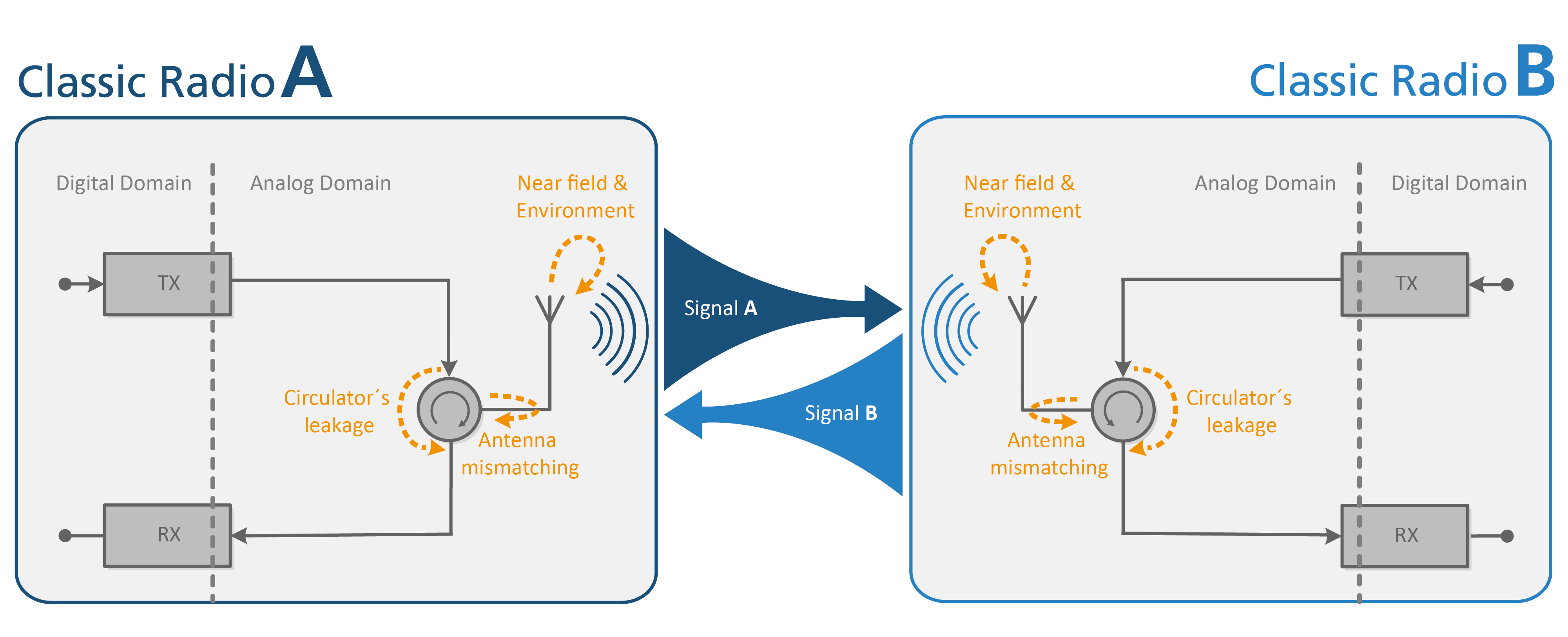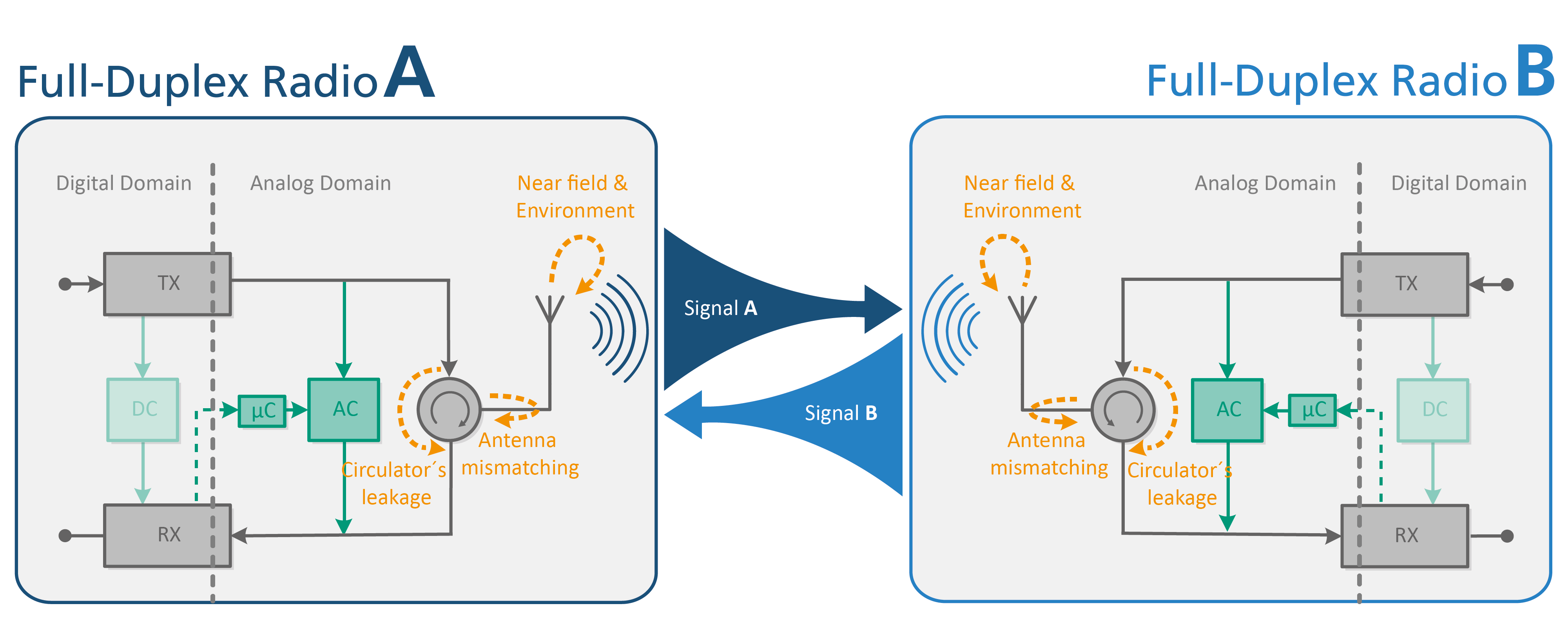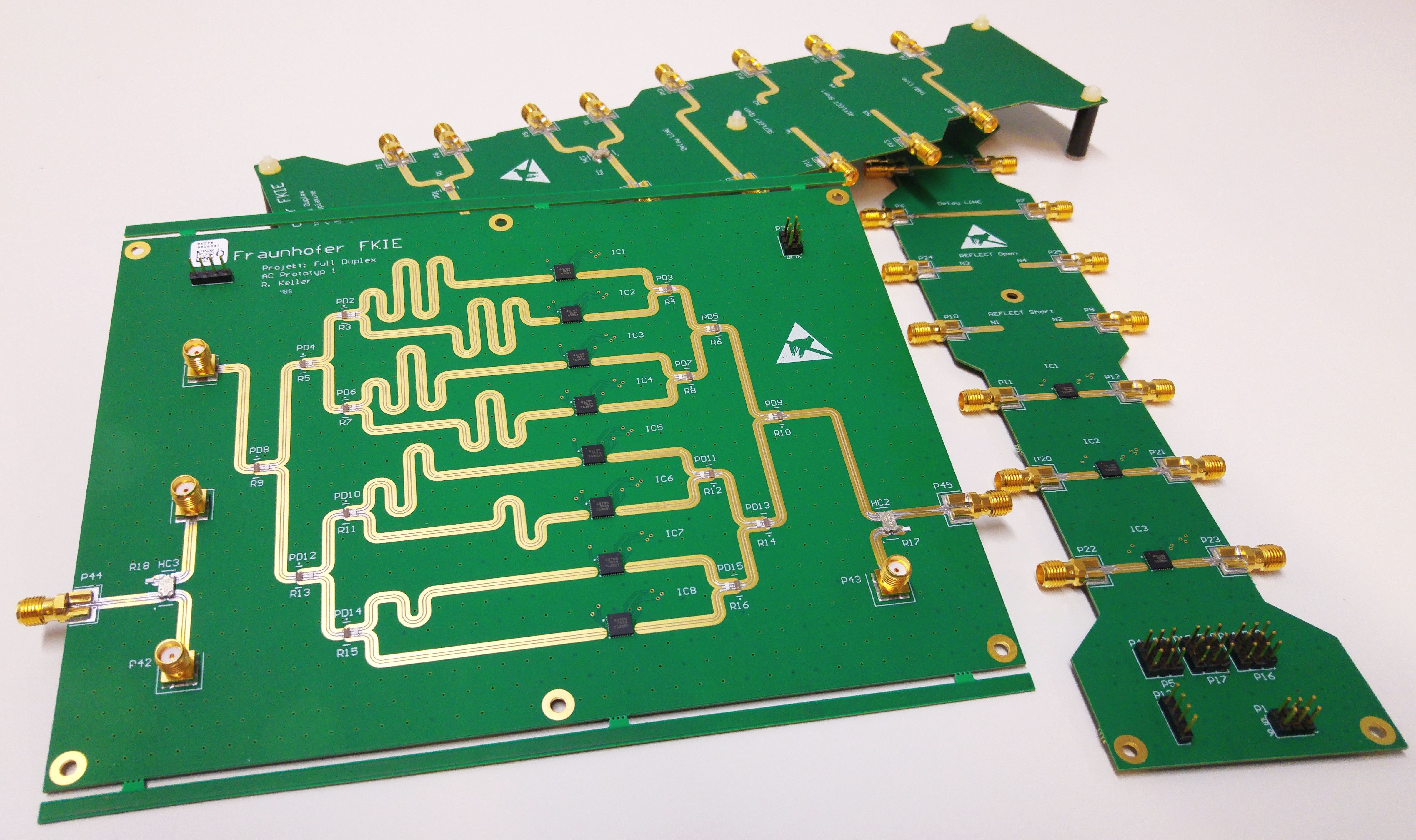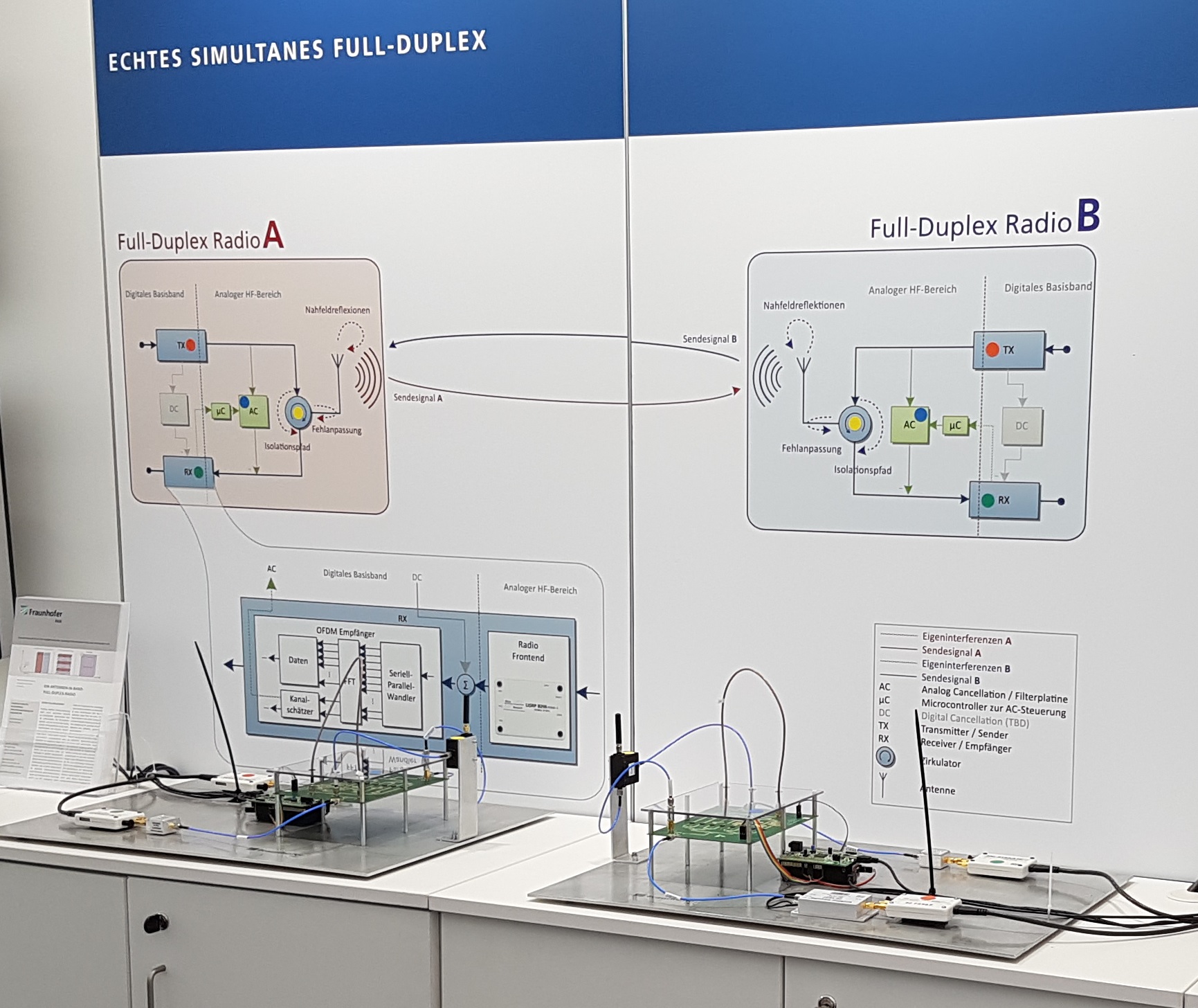Almost all wireless system technologies use the scarce resource of the frequency spectrum to fulfill two typically bidirectional tasks. In cooperative communications the tasks are sending and receiving transmissions, for instance, while in non-cooperative communications the tasks may be reconnaissance and jamming. Just as it is difficult for a person to listen to the soft whisper of a distant speaker while shouting something to him at the same time, developers of wireless system technologies also face major challenges in performing both of these tasks truly simultaneously. For a long time, this was even considered technically impossible.
Classic approaches are therefore based on a strict separation of these two tasks at the antenna, even if the user perceives them as being performed simultaneously. The reality at the antenna, however, is that the two tasks are either being processed sequentially over time (time-division multiplex), or a separate frequency is used for each task (frequency-division multiplex).
Obviously, as a scarce resource, the frequency spectrum could be used much more efficiently (by a factor of 2, at least) if real simultaneity in the performance of both tasks were also possible at the antennas of wireless system technologies. Practical solutions to this challenge are becoming increasingly important, not least due to the advancement of digitalization in every aspect of our lives and the associated increasing need to exchange more and more data via wireless system technologies.




